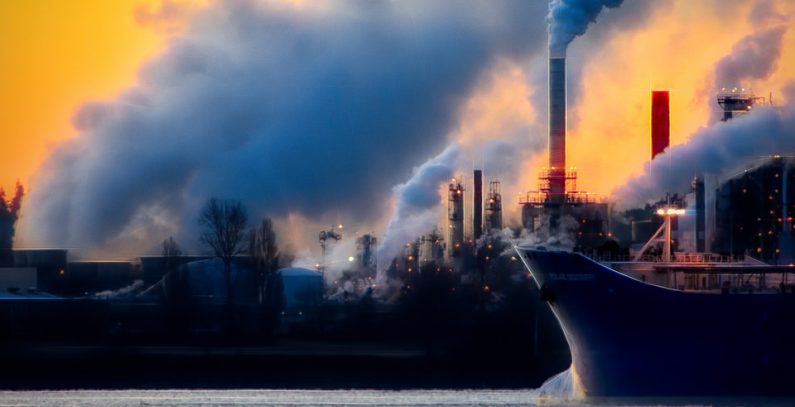
Photo: Pixabay
The Intergovernmental Panel on Climate Change (IPCC), the leading world body for assessing the science related to climate change, has issued a report that calls for “rapid, far-reaching and unprecedented changes in all aspects of society” to limit global warming to 1.5°C. The Special Report on Global Warming of 1.5°C was approved by the IPCC on Saturday in Incheon, South Korea and will be a key scientific input into the Katowice Climate Change Conference in Poland in December, when governments review the Paris Agreement to tackle climate change.
The report, which projects “the annual average investment needs in the energy system of around USD 2.4 trillion between 2016 and 2035,” highlights a number of climate change impacts that could be avoided by limiting global warming to 1.5°C compared to 2°C, or more. For instance, by 2100, global sea level rise would be 10 cm lower with global warming of 1.5°C compared with 2°C. The likelihood of an Arctic Ocean free of sea ice in summer would be once per century with global warming of 1.5°C, compared with at least once per decade with 2°C. Coral reefs would decline by 70%-90% with global warming of 1.5°C, whereas virtually all (more than 99%) would be lost with 2°C, the IPCC said in a press release.
The report finds that limiting global warming to 1.5°C would require “rapid and far-reaching” transitions in land, energy, industry, buildings, transport, and cities. Global net human-caused emissions of carbon dioxide (CO2) would need to fall by about 45% from 2010 levels by 2030, reaching ‘net zero’ around 2050.
The @IPCC_CH report on #GlobalWarming of 1.5°C is one of the most important #climatechange reports ever published. Limiting temperature increase requires unprecedented changes in society, but will have huge benefits. Every half a degree of warming matters. https://t.co/a7GOzVFv50 pic.twitter.com/p0wX5vYrA5
— IPCC (@IPCC_CH) October 8, 2018
Renewables need to supply 70%-85% of electricity in 2050
To limit global warming to 1.5°C, renewables need to supply 70%-85% of electricity in 2050, while shares of nuclear and fossil fuels with carbon dioxide capture and storage (CCS) are modeled to increase. The use of CCS would allow the electricity generation share of gas to be about 8% of global electricity in 2050, while the use of coal would decline steeply to close to 0% (0%-2%) of electricity. The feasibility of solar energy, wind energy, and electricity storage technologies have substantially improved over the past few years, which signals a potential system transition in electricity generation, the report reads.
CO2 emissions from industry would need to be 75%-90% lower in 2050 relative to 2010
At the same time, CO2 emissions from industry would need to be 75%-90% lower in 2050 relative to 2010, as compared to 50%-80% for global warming of 2°C. This could be achieved through combinations of new and existing technologies and practices, including electrification, hydrogen, sustainable bio-based feedstocks, product substitution, and carbon capture, utilization and storage (CCUS).
The urban and infrastructure system imply changes in land and urban planning, as well as deeper emissions reductions in transport and buildings, which would entail various energy efficiency options. The electricity share of energy demand in buildings would be about 55%–75% in 2050 compared to 50%–70% in 2050 for 2°C global warming. In the transport sector, the share of low-emission final energy would rise from less than 5% in 2020 to about 35%–65% in 2050 compared to 25%–45% for 2°C global warming
Effectiveness of techniques that remove CO2 from air unproven at large scale
Allowing the global temperature to temporarily exceed or ‘overshoot’ 1.5°C would mean a greater reliance on techniques that remove CO2 from the air to return global temperature rise to below 1.5°C by 2100. The effectiveness of such techniques is unproven at large scale and some may carry significant risks for sustainable development, the report notes.
The Special Report on Global Warming of 1.5°C was prepared under the scientific leadership of all three IPCC working groups. Working Group I assesses the physical science basis of climate change; Working Group II addresses impacts, adaptation, and vulnerability; and Working Group III deals with the mitigation of climate change.
Limiting global warming to 1.5°C would make it easier to achieve SDGs
The Paris Agreement adopted by 195 nations at the 21st Conference of the Parties to the UNFCCC in December 2015 included the aim of strengthening the global response to the threat of climate change by “holding the increase in the global average temperature to well below 2°C above pre-industrial levels and pursuing efforts to limit the temperature increase to 1.5°C above pre-industrial levels.”
Limiting global warming to 1.5°C compared with 2°C would reduce challenging impacts on ecosystems, human health and well-being, making it easier to achieve the United Nations Sustainable Development Goals (SDGs), said Priyardarshi Shukla, Co-Chair of IPCC Working Group III.
“One of the key messages that comes out very strongly from this report is that we are already seeing the consequences of 1°C of global warming through more extreme weather, rising sea levels and diminishing Arctic sea ice, among other changes,” said Panmao Zhai, Co-Chair of IPCC Working Group I.
“Every extra bit of warming matters, especially since warming of 1.5°C or higher increases the risk associated with long-lasting or irreversible changes, such as the loss of some ecosystems,” said Hans-Otto Pörtner, Co-Chair of IPCC Working Group II.
The next few years are probably the most important in our history
The decisions we make today are critical in ensuring a safe and sustainable world for everyone, both now and in the future, said Debra Roberts, Co-Chair of IPCC Working Group II.
“This report gives policymakers and practitioners the information they need to make decisions that tackle climate change while considering local context and people’s needs. The next few years are probably the most important in our history,” she said.


















Be the first one to comment on this article.